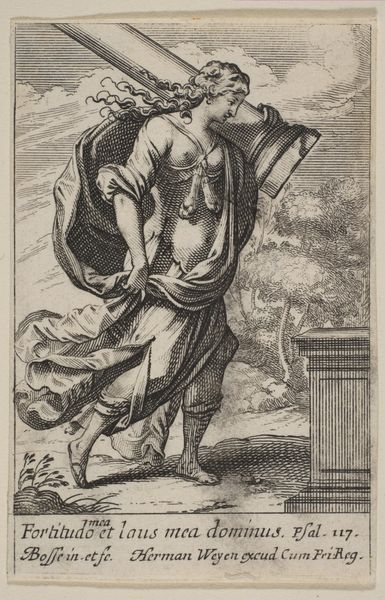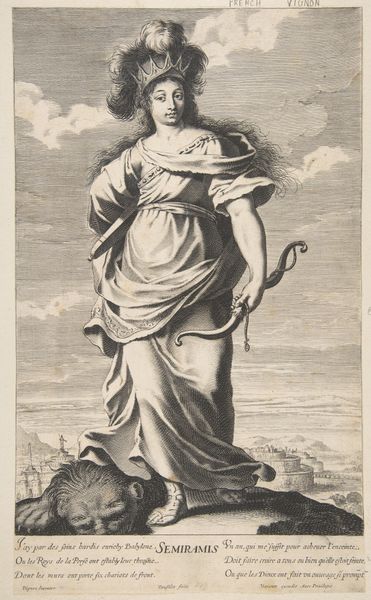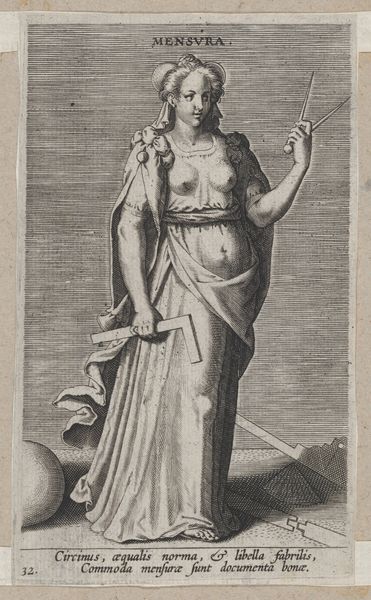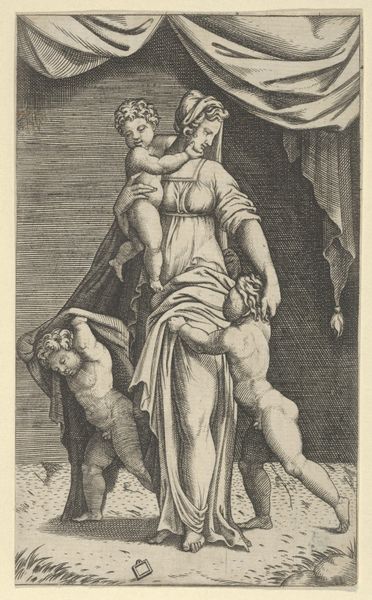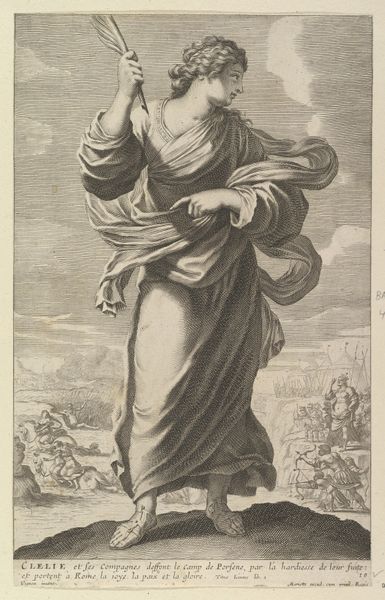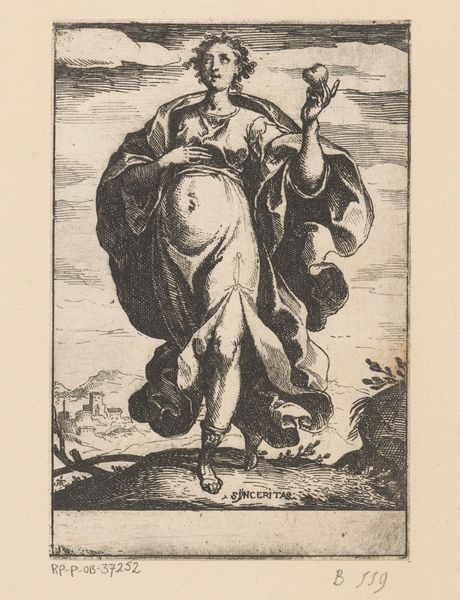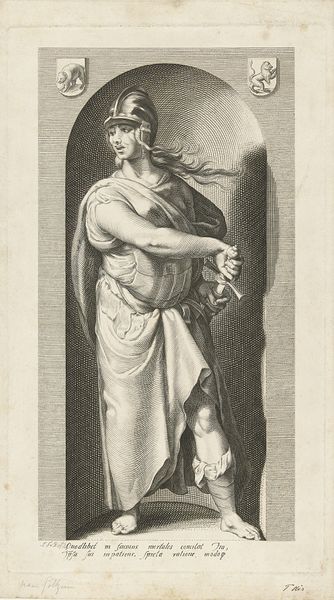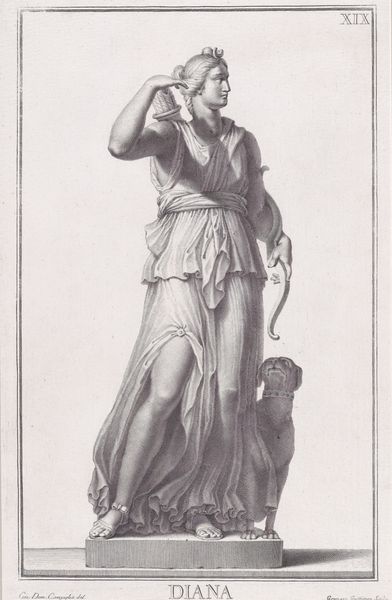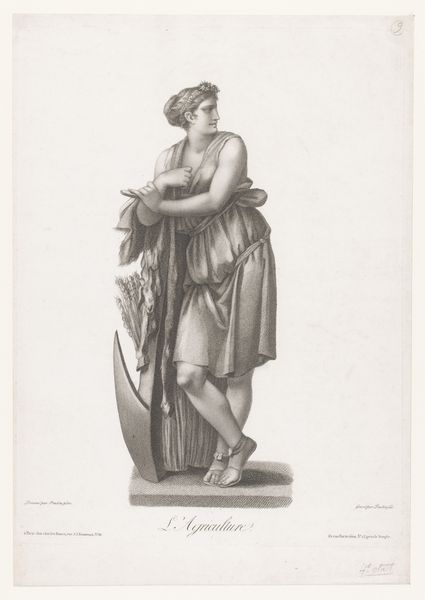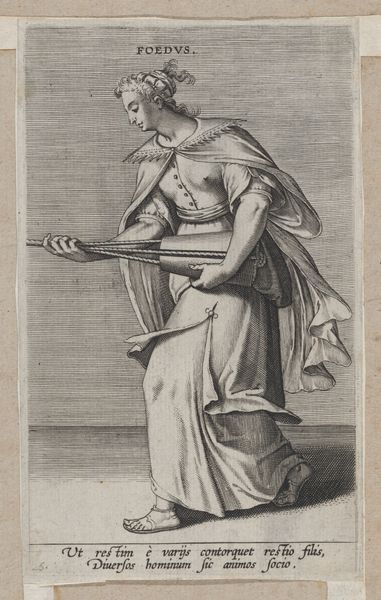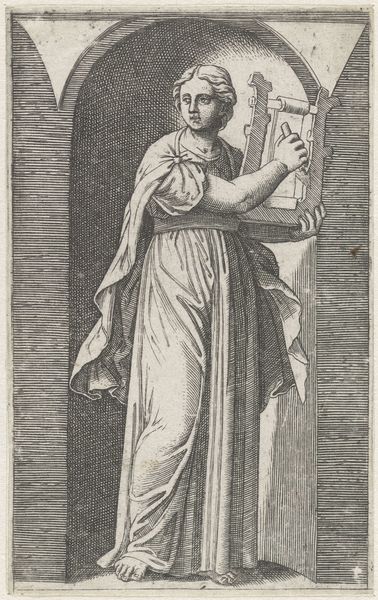
Seated Figure of Justice, from Farnese Palace, after Annibale and Agostino Carracci 1641
0:00
0:00
drawing, print, intaglio, engraving
#
drawing
#
allegory
#
baroque
# print
#
intaglio
#
figuration
#
history-painting
#
academic-art
#
engraving
Dimensions: Sheet (trimmed): 8 7/8 × 5 7/8 in. (22.5 × 15 cm)
Copyright: Public Domain
Curator: Immediately, there's a sense of melancholy—the shading almost seems to weigh her down. It’s powerful, yet somehow delicate. What is this? Editor: We're looking at "Seated Figure of Justice, from Farnese Palace, after Annibale and Agostino Carracci," an engraving created in 1641 by Jacques Belly. It's an intaglio print and it now resides here at the Metropolitan Museum of Art. Curator: Ah, Justice. Her gaze, though averted, feels profoundly knowing. Is she weary of what she sees, perhaps? You know, I find myself thinking about the socio-political currents that were swirling around 17th-century Europe, you know, class hierarchies, colonialism... How Justice was truly dispensed at the time. This is a figure burdened, not triumphant. Editor: That’s interesting! I read her posture differently. I see a strength there—resignation maybe, but not defeat. It makes me wonder about the original frescoes that the engraving reproduces... The almost theatrical baroque drama flattened and transformed through the lines and burin work of the engraver. I am very moved. Curator: It is interesting how the piece references these older paintings but is translated to a print that then allowed for wider distribution to other audiences, furthering those beliefs. She isn't brandishing a sword or scales here; she is contemplative, literally holding the strings. It makes me wonder what Belly wanted to say about Justice, given what he chose to highlight. How do you make an ethical image in such times? How much artistic license did he have? Editor: Yes, the power is subtly communicated through her restraint, her downward glance. The medium certainly contributes to its impact; it's rendered in incredibly intricate detail and that's hard to replicate from the original baroque paintings. Almost like looking at a drawing rather than a print! Curator: This really underscores how depictions of Justice reflect not only ideals but also social and political realities. It is still quite telling and relative today, as we think of how justice, equality, race, and gender all play important factors. Editor: Absolutely. Each line in the engraving invites us to think critically about those ever-evolving ideas, I agree! And it leaves us with a quieter, perhaps more haunting impression than the original.
Comments
No comments
Be the first to comment and join the conversation on the ultimate creative platform.
